Text
How Are Advanced Peptide Synthesis Platforms Help in Creating Catalog Peptides?
Development of new drug production technologies and peptides will help the catalog peptides market to advance at a CAGR of 5.8% during 2019–2024. For example, a surge in research activities to understand the efficient expression of difficult-to-express and new proteins, through cell line and protein engineering, is a step toward upcoming drug discoveries. Owing to the escalating researches focusing on the unmet requirements for chronic ailments, such as cancer, respiratory disorders, and ischemic heart disease, government organizations are investing hefty amounts on research activities to develop new cost-effective drugs.
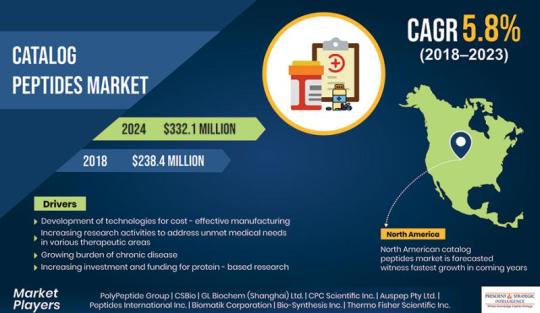
Moreover, development of advanced platforms for peptide synthesis by private companies has led to the increased production of catalog peptides. For example, New England Peptide Inc. (NEP) utilizes its PepTrend system to synthesize and design peptides. The company also uses its proprietary peptide array platform to synthesize 96 types of peptides at a rapid pace and in a cost-effective manner. These technological advancements have enhanced the production capability of companies for the creation of advanced peptides that are used for research and antibody development purposes.
The catalog peptides market offers calcitonin gene-related, cyclic, caspase related, adrenomedullin, tau, amyloid, G-protein-coupled receptor (GPCR), anti-microbial, cosmetic, and amylin peptides. Among these, cyclic peptide is the most widely used peptide, as it possesses diverse biological activities like immunosuppressive, anti-tumor, and antibacterial.
All these peptides find wide applications in academic and research institutes, contract manufacturing organizations (CMOs) and contract research organizations (CROs), and pharmaceutical and biotechnology companies. Of the various end users, the pharmaceutical and biotechnology companies consume the highest volume of peptides to manufacture drugs and evaluate the application of peptides as therapeutics.
#Catalog Peptides Market#Catalog Peptides Market Size#Catalog Peptides Market Share#Catalog Peptides Market Demand#Catalog Peptides Market Growth#Catalog Peptides Market Outlook#Catalog Peptides Market Trends
0 notes
Text
How Mass Production of Medicines Drives Pharmaceutical Filtration Market?
Compared to 7.7 billion in 2019, the earth would be home to 9.7 billion people by 2050, says the United Nations, in its 2019 World Population Prospects report. With population boom, the demand for everything, be it food, water, clothes, housing, or medicines, will rise too. Plus, with the prevalence of chronic diseases surging, prescription as well as over-the-counter (OTC) drugs are needed more than ever. This is leading to huge investments in the pharmaceutical industry, wherein new production plants as well as research laboratories are being set up. At both these places, filtration is one of the most important processes, as the drugs being produced or researched upon must be completely contamination-free.
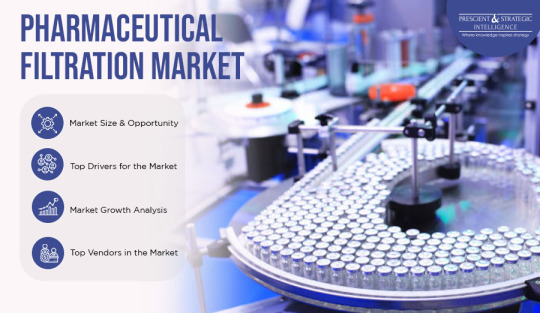
In such settings, filters and accessories are used for raw material filtration, water purification, final product processing, air purification, and cell separation. Among these, they see the widest application in final product filtration, because of the importance of sterile filtration, active pharmaceutical ingredient filtering, vaccine and antibody processing, protein purification, viral clearance, and formulation and filling solution filtration. These procedures are widely performed during the drug discovery stage, and then, even more extensively during the mass production stage.
Around the world, currently North America and Europe are the two largest pharmaceutical filtration markets, as they account for the highest medical drug production and R&D. These regions have already possessed more advanced technology than others, which automatically gives them an edge over other regions. The U.S., Germany, the Netherlands, Belgium, Switzerland, and Italy are the largest medical drug exporters around the world.
On similar lines, several developing countries are rapidly increasing their pharma production, for which a high requirement for filters is being created. For instance, the Indian pharmaceutical industry, which valued $33 billion in 2017, would reach $55 billion by 2020, according to the India Brand Equity Foundation (IBEF). Several multinational companies, such as McKinsey and PwC have iterated that India’s phara sector would be the fastest growing around the world in the coming years. It is not just because of domestic companies coming up, but also the shifting of the drug manufacturing plants of overseas firms.
Thus, with pharmaceutical production picking up in developing countries, the demand for filters and related accessories would also increase.
#Pharmaceutical Filtration Market#Pharmaceutical Filtration Market share#Pharmaceutical Filtration Market Trends#Pharmaceutical Filtration Market Outlook
0 notes
Text
Microbiology Cell Culture Helping Develop Effective Drugs in Saudi Arabia
The life sciences sector is thriving in Saudi Arabia on account of the strengthening economy and rising healthcare expenditure. For instance, in 2016, King Abdulaziz City for Science and Technology (KACST) invested $373.0 million in health biotechnology research initiatives, under the National Science, Technology and Innovation Plan (NSTIP), to study some rare conditions in the region. The investment was essentially aimed at novel methods to diagnose and treat communicable and non-communicable diseases. Therefore, with the rising prevalence of infectious diseases in Saudi Arabia, the microbiology cell culture technology will advance in the coming years.
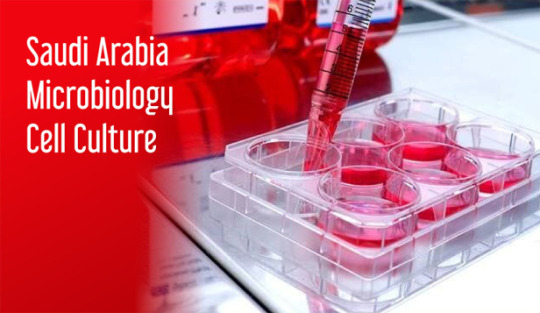
In recent years, pharmaceutical and biotechnology firms in Saudi Arabia have increasingly preformed microbiology cell culture to conduct research for developing numerous drugs against different health conditions and diseases. Diabetes, neonatal disorders, Alzheimer’s disease, and lower respiratory infection are some of the leading conditions leading to death in the country. Due to the rising prevalence of such diseases, the Saudi Arabian microbiology cell culture market will advance at a CAGR of 4.5% during 2018–2023. According to P&S Intelligence, the market is expected to grow from $29.8 million in 2017 to $38.7 million by 2023.
Currently, Saudi Arabia is witnessing widescale automation in microbiology to meet the challenges associated with the increasing necessity for rapid turnaround and rising test volumes in laboratories. The deployment of computer technology in laboratories and utilization of laboratory interface systems (LIS) enables the usage of minimal sample volumes for precise results. According to a study published by the National Center for Biotechnology Information (NCBI), researchers used matrix-assisted laser desorption/ionization-time of flight (MALDI-TOF) mass spectrometry (MS) for identifying new species of bacteria in air samples from Makkah during the Hajj. This is because a surge in the cases of respiratory tract infections is noted during the Hajj.
#Saudi Arabia Microbiology Cell Culture Market#Saudi Arabia Microbiology Cell Culture Market Size#Saudi Arabia Microbiology Cell Culture Market Share#Saudi Arabia Microbiology Cell Culture Market Demand#Saudi Arabia Microbiology Cell Culture Market Growth#Saudi Arabia Microbiology Cell Culture Market Trends
0 notes
Text
Which is Most Popular Technology in Cancer/Tumor Profiling Market?
Every year, over 9.5 million people die as result of cancer, as per the World Health Organization (WHO), thereby becoming one of the major reasons for human mortality around the world. The disease, which is most prominently characterized by the presence of tumors, forms when a mutation (undesirable change) in a gene or protein causes a particular type of cell to divide faster than the rate of the normal cell death, thereby resulting in the growth of a visible mass. For effective treatment, merely detecting the tumor within the body is not enough; its nature and the exact mutation which caused it also need to be studied.
Browse detailed report on Cancer/Tumor Profiling Market Revenue Estimation and Forecast

Therefore, owing to the increasing number of people suffering from this disease and the high focus on deeply studying its various aspects, in order to device an effective therapy, the cancer/tumor profiling market is growing around the world. Several technologies, including quantitative polymerase chain reaction (QPCR), next-generation sequencing (NGS), in-situ hybridization (ISH), immunohistochemistry (IHC), and microarray, are used to study the tumors. Of these, NGS has been the most widely preferred till now, on account of its ability to quickly detect the sequencing of the deoxyribonucleic acid (DNA) in the genome.
Presently, the most productive cancer/tumor profiling market is North America, on account of the heavy investments in cancer research and therapy areas. Moreover, numerous technological advancements are taking place in the healthcare industry of the region, which are resulting in the introduction of more-advanced profiling techniques. In the region, the prevalence of common as well as rare cancers is rising, which is leading to increasing complexities in the diagnosis procedure.
0 notes
Text
Increasing Biopharmaceutical Production Driving Cell Isolation Market Growth
The global cell isolation market generated $4.6 billion revenue in 2017 and it is predicted to reach a value of $12.6 billion by 2023. The market will advance at a CAGR of 18.8% from 2018 to 2023 (forecast period), as per the estimates of P&S Intelligence, a market research company based in India. The major factors fueling the expansion of the market are the burgeoning requirement for biopharmaceuticals, increasing research on personalized medicine, and soaring investments being made by several governments in cell-based research.
Receive Sample Copy of this Report: https://www.psmarketresearch.com/market-analysis/cell-isolation-market/report-sample
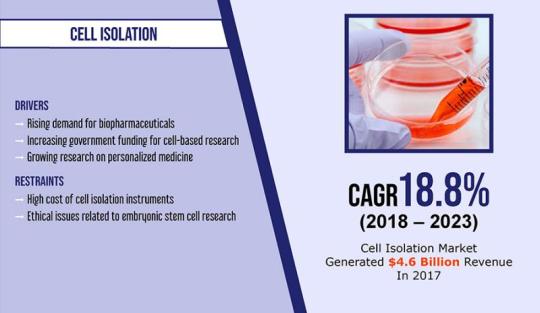
As cell isolation is extensively used for producing biopharmaceuticals, the surging production of biopharmaceuticals, on account of the growing incidence of cancer and other chronic illnesses, is driving its popularity across the world. Cell isolation or separation techniques are mainly used for detecting diseases early and producing biopharmaceuticals such as biosimilars, recombinant proteins, and monoclonal antibodies. These biopharmaceuticals are required for treating various chronic diseases such as cancer. Monoclonal antibodies are being increasingly used in cancer treatment, on account of their ability to target antigens and irregular pathways that are usually present in cancers.
Make an Enquiry before Purchase: https://www.psmarketresearch.com/send-enquiry?enquiry-url=cell-isolation-market
When cell type is taken into consideration, the market is classified into animal cells and human cells. Between these, the human cells category is predicted to exhibit faster growth in the market in the forthcoming years. This will be because of the rapid technological advancements being made in stem cell treatment procedures across the world. The cell isolation market is also categorized, on the basis of application, into biomolecule isolation, cancer research, stem cell research, tissue regeneration, therapeutics, and in vitro diagnostics.
Amongst these, the biomolecule isolation category held the largest share in the market in the past, due to the strong focus of pharmaceutical organizations on developing biomolecule-based drugs because of their lesser side effects in comparison to the small molecules. Across the world, the cell isolation market is predicted to register the fastest growth in the Asia-Pacific (APAC) region during the forecast period, primarily because of the surging focus of researchers on basic and applied research in the region.
#Cell Isolation Market#Cell Isolation Market Size#Cell Isolation Market Share#Cell Isolation Market Demand#Cell Isolation Market Growth#Cell Isolation Market outlook
0 notes
Text
Government and International Organizations Investing Heavily in Synthetic Biology
Synthetic biology aims to genetically engineer organisms to generate a substance like fuel or medicine or gain a new ability. Companies and researchers involved in synthetic biology are harnessing the potential of nature to solve problems in the agriculture, medicine, chemical, and manufacturing sectors. Scientists across the world are producing microorganisms for bioremediation, to remove pollutants from the air, water, and soil. These stakeholders are also engineering yeast to create rose oil, which acts as a sustainable and eco-friendly substitute for real roses. The rose oil is used by perfume manufacturers to make luxury cologne.
Receive Sample Copy of this Report: https://www.psmarketresearch.com/market-analysis/synthetic-biology-market/report-sample
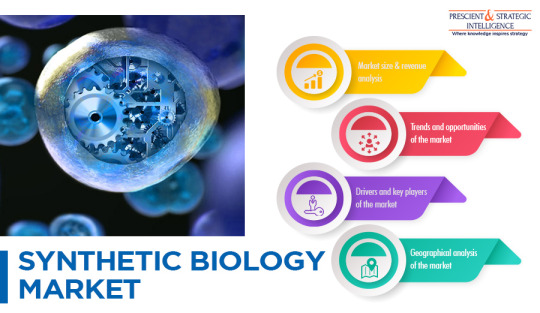
As a result, synthetic biology companies and researchers are using technologies such as gene synthesis, genome engineering, mutagenesis, bioinformatics, cloning, gene measurement and modeling, pathway engineering, and next-generation sequencing and tools such as cloning kits, xeno nucleic acid, oligonucleotide, enzyme, and chassis organisms to innovate products for the chemical, energy, agriculture, and pharmaceutical sectors. For this, New England Biolabs Inc., Amyris Inc., Integrated DNA Technologies Inc., Synthetic Genomics Inc., E. I. du PONT de Nemours and Company, Novozymes A/S, Thermo Fisher Scientific Inc., Intrexon Corporation, Royal DSM, and GenScript USA Inc. are also pursuing mergers and acquisitions.
Make an Enquiry before Purchase: https://www.psmarketresearch.com/send-enquiry?enquiry-url=synthetic-biology-market
However, the stakeholders also give priority to the ethical and social implications attached to this field. Major entities related to bioethics, such as the National Academies of Sciences, Engineering and Medicine and the Presidential Commission for the Study of Bioethical Issues, have stated that public engagement and dialogue are quintessential for the emerging synthetic biology technologies. Since many of these stakeholders are based in North America, this region is the frontrunner in the synthetic biology market, according to P&S Intelligence.
Thus, the advancements in synthetic biology technologies will lead to the production of sustainable bioproducts, such as fuels and medicines.
#Global Synthetic Biology Market#Synthetic Biology Market#Synthetic Biology Market Analysis#Synthetic Biology Industry#Share#Size#Trends#Demand Forecast#Outlook#Growth
0 notes
Text
Surge Expected in Asia-Pacific Laboratory Filtration Market in Near Future
Due to the mushrooming utilization of filtration items in the food and beverage industry and the development of technologically advanced and innovative products, the global laboratory filtration market is predicted to exhibit huge expansion in the coming years. In addition to this, the soaring research and development (R&D) activities in the biopharmaceutical and pharmaceutical industries and the surging usage of filtration materials in clinical laboratories are also fueling the expansion of the market across the globe.
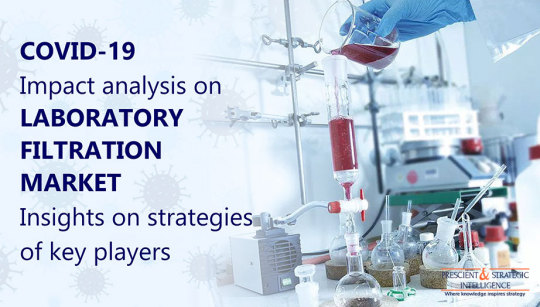
Receive Sample Copy of this Report: https://www.psmarketresearch.com/market-analysis/laboratory-filtration-market/report-sample
The growing usage of the membrane filtration method in the food and beverage industry is one of the major factors driving the progress of the market. Membrane filtration is basically a unique technology that incorporates the use of a physical barrier, which can be a filter or a membrane, for separating various unwanted substances from a fluid. Due to its ability to provide effective results in purification and fractionation processes, its popularity is rising sharply around the world.
Make an Enquiry before Purchase: https://www.psmarketresearch.com/send-enquiry?enquiry-url=laboratory-filtration-market
When technology is taken into consideration, the laboratory filtration market is classified into reverse osmosis, ultrafiltration, nanofiltration, microfiltration, and vacuum filtration. Amongst these, the microfiltration category registered the highest growth in the market in the past years and this category is predicted to demonstrate rapid advancement in the future years as well. Geographically, the market will register huge expansion in the U.S., Japan, and Germany in the forthcoming years, as per the estimates of the market research firm, P&S Intelligence.
#Laboratory Filtration Market#Laboratory Filtration Market Size#Laboratory Filtration Market Share#Laboratory Filtration Market Demand#Laboratory Filtration Market Growth
0 notes
Text
Rising Prevalence of Cancer Pushing Up Demand for Molecular Cytogenetics
The increasing incidence of cancer is one of the biggest factors responsible for the growing demand for molecular cytogenetics methods. This is because various molecular cytogenetics methods are heavily adopted for cancer diagnostic purposes. Besides this, the surging number of cancer research projects being conducted in several countries is also fueling the demand for molecular cytogenetics, on account of the fact that advanced methods are required for gaining a better understanding of the disease at the chromosomal level.
Receive Sample Copy of this Report: https://www.psmarketresearch.com/market-analysis/molecular-cytogenetics-market/report-sample

The growing popularity of genetic-based prediction and estimation of various chromosomal abnormalities, the surging population of geriatric people and their susceptibility to chronic ailments, and the rising usage of molecular cytogenetics in crop improvement are the other important factors adding wings to the molecular cytogenetics demand across the globe. This is, in turn, fueling the boom of the global molecular cytogenetics market. The market is predicted to progress at a CAGR of 9.9% from 2018 to 2023.
Make an Enquiry before Purchase: https://www.psmarketresearch.com/send-enquiry?enquiry-url=molecular-cytogenetics-market
Geographically, the molecular cytogenetics market is expected to demonstrate the fastest growth in the Asia-Pacific (APAC) region in the upcoming years. This would be a result of the existence of an untapped industry, the entry of several global market players that provide cytogenetic testing, and the presence of a huge population in this region. The enactment of various government initiatives such as testing, training, and funding programs for medical researchers is also driving the market advancement in this region.
#Molecular Cytogenetics Market#Molecular Cytogenetics Market Size#Molecular Cytogenetics Market Share#Molecular Cytogenetics Market Demand#Molecular Cytogenetics Market Growth#Molecular Cytogenetics Market Outlook
0 notes
Text
How Geriatric Population Helps Protein Expression Market Grow?
Proteins have a vast array of functions than just ‘building the body’ as taught to children in school. They speed up several metabolic functions, help the ribonucleic acid (RNA) divide and proliferate, respond to numerous external and internal stimuli, provide cells with the proper structure, and ferry molecules from one site within the body to another. Since people have gained knowledge on how proteins are produced and manipulated within the body, the artificial synthesis of these biomolecules has become possible. The process, which is known as protein expression, is also used to study the proteins themselves, apart from producing them in labs.

Compared to younger people, the elderly are more at risk to chronic conditions. Such people are immunologically compromised, have slower biological functions, and are also physically weaker, which lead to a higher prevalence of major chronic diseases, such as cancer, diabetes, and cardiovascular diseases (CVD) in the geriatric population. As per the World Population Ageing 2019 report of the United Nations Department of Economic and Social Affairs (UNDESA), the population of people 65 years or older will increase from 703 million in 2019 to 1.5 billion by 2050, thereby propelling the demand for various drugs and therapies, for which protein expression is being increasingly used.
Prokaryotic cell-based, mammalian cell-based, insect cell-based, yeast based, algae-based, and cell-free systems are used to study proteins and produce them for research or commercial purposes. Among these, prokaryotic cell-based systems are the most widely utilized, as compared to others, they are more cost-effective. Various expression vectors, reagents, instruments, competent cells, and services are utilized by companies engaged in protein research or synthesis. In the coming years, the demand for reagents is predicted to increase the fastest, as a result of the rising production of vaccines and antibodies and the number of protein research organizations around the world.
Presently, the most productive protein expression market has been North America, as a result of the high prevalence of chronic diseases here. The Centers for Disease Control and Prevention (CDC) says that six in every 10 adults in the U.S. have a chronic health condition, while four in ten have at least two. Moreover, the continent is home to numerous critically acclaimed medical research centers and globally operating pharma companies, which are increasing adopting the protein expression technique for medical research, and drug discovery and mass production.
#Protein Expression Market#Protein Expression Market Size#Protein Expression Market Share#Protein Expression Market Demand#Protein Expression Market Growth#Protein Expression Market Outlook#Protein Expression Market Trends
0 notes
Text
Protein Extracts from Single Cell Protein Sources Market to Witness Robust Growth in Coming Years
Soaring number of initiatives by governments and private organizations for creating awareness amongst the people about the health and environmental benefits of alternative protein sources is one of the major factors responsible for the rise in the demand for protein extracts from single cell protein sources across the world. For instance, Valensa International, which is a major producer of microalgae-based nutraceuticals launched an alliance with a U.S. based trade organization called Algae Biomass Organization (ABO) in 2017 in order to create awareness amongst the masses about the consumption of microalgae as an alternative protein source.
Receive Sample Copy of this Report: https://www.psmarketresearch.com/market-analysis/protein-extracts-from-single-cell-protein-sources-market/report-sample

Due to the above-mentioned factors, the revenue generated from the worldwide sales of protein extracts from single protein sources will increase from $5.3 billion to $8.7 billion from 2017 to 2023. Moreover, the global protein extracts from single cell protein sources market is predicted to advance at an 8.6% CAGR during the forecast period (2018–2023). There are various alternative sources of protein, such as yeast, fungi, bacteria, and algae. Amongst these, the utilization of algae-based protein sources is expected to record the fastest rise in the coming years.
Make an Enquiry before Purchase: https://www.psmarketresearch.com/send-enquiry?enquiry-url=protein-extracts-from-single-cell-protein-sources-market
Protein extracts from single cell protein sources are widely used in various applications such as biotechnology, agriculture and fertilizers, and animal feed. Out of these, the usage of these protein extracts in animal feed applications was observed to be the highest in 2017 and this trend is expected to continue during the forecast period as well. This is mainly attributed to the mushrooming production of animal feed in order to meet the needs of the surging buffalo, livestock, and cattle population.
Therefore, it can be said with full surety that owing to the increasing consumption of protein by livestock, animals, and people and increasing awareness amongst the masses about alternative protein sources, the demand for protein extracts from single cell protein sources will boom in future.
#Protein Extracts from Single Cell Protein Sources Market#Protein Extracts from Single Cell Protein Sources Market Size#Protein Extracts from Single Cell Protein Sources Market Share#Protein Extracts from Single Cell Protein Sources Market Demand#Protein Extracts from Single Cell Protein Sources Market Growth#Protein Extracts from Single Cell Protein Sources Market Outlook#Protein Extracts from Single Cell Protein Sources Market Trends#Protein Extracts from Single Cell Protein Sources Market Research Report
0 notes
Text
What is Preferred Product in Protein A Resin Market?
Cancer kills over 9.5 million people each year, as per the World Health Organization (WHO), which makes it the second leading cause of human mortality. With the increasing prevalence of this disease in developed as well as developing countries, the pressure on the medical fraternity to find an effective treatment is increasing.
Receive Sample Copy of this Report: https://www.psmarketresearch.com/market-analysis/protein-a-resin-market/report-sample

These therapies are not just used for the treatment of cancer, but for a number of other chronic diseases, such as multiple sclerosis (MS), rheumatoid arthritis (RA), cardiovascular diseases (CVD), ulcerative colitis, Crohn’s disease, psoriasis, anemia, and hemophilia, and several infectious diseases. Because of all such uses of these biopharmaceuticals, the geriatric population could generate a significantly high demand for them. As people age, they become susceptible to these and many more health issues, on account of their immunological and physical weakness. With the number of people in the age group of 65 and above set to cross 1.5 billion by 2050, as per the United Nations, the demand for proteins and mAbs would rise too.
Make an Enquiry before Purchase:https://www.psmarketresearch.com/send-enquiry?enquiry-url=protein-a-resin-market
For the manufacturing of both these types of therapeutic agents, protein A resin can be derived from natural or recombinant sources; natural means that it is cultured in the very organism it is found in, i.e. the S. aureus bacteria. On the other hand, recombinant means to culture the protein in some other organism, most commonly the Escherichia coli (E. coli). Of these, recombinant protein A resin witnesses higher demand, as a large amount of high-purity biopharmaceutical can be produced this way, which makes it cost-effective for the manufacturing company as well as those using it to produce therapeutic proteins and mAbs.
On a geographical basis, the largest contribution to the protein A resin market has been made by North America till now, on account of the increasing requirement for therapeutics based on proteins, for the management of chronic diseases. In addition, the Food and Drug Administration (FDA) has approved numerous biopharmaceuticals, which is encouraging companies in the domain to use protein A resin for other similar products. In the coming years, Asia-Pacific (APAC) would witness the fastest rise in the consumption of this protein, as it is being increasingly used in medical research.
#Protein A Resin Market#Protein A Resin Market Size#Protein A Resin Market Share#Protein A Resin Market Demand#Protein A Resin Market Growth#Protein A Resin Market Trends
0 notes
Text
Synthesis of Custom Peptides Boosting Drug Development
Presently, the pharmaceutical sector is synthesizing peptides through multiple processes, on account of technological advancements. In earlier times, peptides were produced with the help of natural sources. For instance, adrenocorticotropic hormone (ACTH) was developed from porcine and bovine pituitary, and insulin was derived from bovine and canine pancreas. These manufacturing processes were time consuming and resulted in low production. However, with innovations in technology, biopharmaceutical companies have started creating synthetic peptides like vasopressin, leuprorelin, oxytocin, and octreotide with the help of solid-phase peptide synthesis (SPPS), hybrid and recombinant technology, and solution-phase peptide synthesis (SPS) technologies.
Receive Sample Copy of this Report: https://www.psmarketresearch.com/market-analysis/customized-peptide-synthesis-market/report-sample

Moreover, the surging participation of private and public research institutes in synthetic biology research will accelerate the customized peptide synthesis market at a CAGR of 6.4% during 2019–2024. The market stood at $268.8 million in 2018, and it has the potential to reach $390.0 million by 2024. The increasing participation of research entities will amplify the funding for the development of advanced and innovative bio-based products, to deal with the global health challenges. These research and development (R&D) activities are essentially aimed at producing better drugs for the treatment of chronic diseases.
Make an Enquiry before Purchase:https://www.psmarketresearch.com/send-enquiry?enquiry-url=customized-peptide-synthesis-market
Geographically, North America synthesized the highest volume of customized peptides in 2018 due to the rising utilization of these biopharmaceuticals for preparing monoclonal antibodies, performing disease research, and discovering drugs. Moreover, the escalating funding from governments for peptide research and increasing incidence of chronic diseases in the region have pushed the demand for customized peptides. According to the Centers for Disease Control and Prevention (CDC), 6 in 10 adults in the U.S. are living with some chronic disorder. Additionally, CDC states that the country registers at least one cardiovascular disease (CVD)-related death every 36 seconds.
#Customized Peptide Synthesis Market#Customized Peptide Synthesis Market Size#Customized Peptide Synthesis Market Share#Customized Peptide Synthesis Market Outlook#Customized Peptide Synthesis Market Demand#Customized Peptide Synthesis Market Applications
0 notes
Text
Skin Replacement and Substitutes Market to be $1,202.2 Million Investment Opportunity by 2024
Over 180,000 people are burned to death every year, the World Health Organization (WHO) had estimated in 2018. Additionally, burns are the leading cause of disability-adjusted life years (DALY) in low- and middle-income countries. Such incidents often lead to nasty scars, as the skin peels or melts. In severe cases, the skin is damaged so much that it is unable to heal or grow back on its own, which results in skin grafting procedures.
Receive Sample Copy of this Report: https://www.psmarketresearch.com/market-analysis/skin-replacement-and-substitutes-market/report-sample

Thus, with the increasing incidence of burn injuries, the skin replacement and substitutes market, which valued $838.0 million in 2018, is predicted to grow to $1,202.2 million by 2024, at a CAGR of 6.3% during 2019–2024 (forecast period). The usage of such products helps close and mend the wound as well as reduce the pain, which is why they are witnessing a rising adoption around the world. There are two primary types of skin replacement and substitute products available — cellular and acellular — of which the acellular variants are more in demand, as they can be used for excised and superficial wounds, even in pediatric patients.
Make an Enquiry before Purchase: https://www.psmarketresearch.com/send-enquiry?enquiry-url=skin-replacement-and-substitutes-market
Currently, North America accounts for the highest usage of such products, on account of a large number of hospitals and other medical facilities offering treatment for wounds. Other than this, the rapid technological advancements being brought about in the healthcare sector and rising healthcare expenditure are also responsible for the high usage of such products in the region. In the coming years though, Asia-Pacific (APAC) is expected to witness the fastest skin replacement and substitutes market growth, as a result of the high number of burn cases here. India and China witness the highest number of such incidents, which is leading to the rising demand for treatment.
Therefore, with more people suffering from burns and skin diseases, the demand for products which help treat the wounds will also increase.
#Skin Replacement and Substitutes Market#Skin Replacement Market#Substitutes Market#Skin Replacement and Substitutes Market Size#Skin Replacement and Substitutes Market Share#Skin Replacement and Substitutes Market Demand#Skin Replacement and Substitutes Market Growth#Skin Replacement and Substitutes Market Outlook
0 notes
Text
Research and Investment Leading to Development of Advanced Oligonucleotides
A surge in research activities in synthetic biology and improvement in oligonucleotide synthesis have led to the development of advanced oligonucleotides. Recent innovations in synthesis techniques have led to the swift and cost-effective synthesis of oligomers. Moreover, the developments of novel sets of protecting amino groups, better coupling reagents, and high-throughput synthesizers have transformed the synthesis of oligonucleotides. These advancements will propel the oligonucleotide synthesis market at 10.8% CAGR during 2018–2023. At this rate, the market is expected to reach $2.8 billion by 2023 from $1.5 billion in 2017.
Receive Sample Copy of this Report:https://www.psmarketresearch.com/market-analysis/oligonucleotide-synthesis-market/report-sample
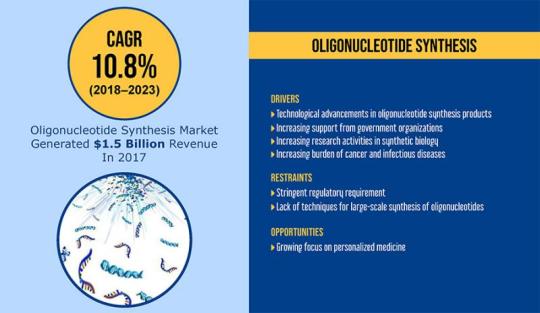
In the same vein, the evolution of microarray technology has assisted the development of oligonucleotide products for therapeutic and diagnostic processes. For example, research of numerous oligonucleotides with biological ligands has led to its increased application in the diagnosis of several inherited disorders. Similarly, constant improvement in microchip-based oligonucleotide synthesis has led to the surge in throughput and decrease in cost of synthesis of oligonucleotides. Additionally, developments in technologies, such as enzymatic error correction, have led to the reduction in frequency of errors in synthesized products.
Make an Enquiry before Purchase:https://www.psmarketresearch.com/send-enquiry?enquiry-url=oligonucleotide-synthesis-market
Thus, the continuous advancements in technologies coupled with high prevalence of life-threatening diseases that demand early diagnosis and treatment will fuel the adoption of oligonucleotides in the coming years.
#Oligonucleotide Synthesis Market#Oligonucleotide Synthesis Market Share#Oligonucleotide Synthesis Market Outlook#Oligonucleotide Synthesis Market Trends#Oligonucleotide Synthesis Market Research Report
0 notes
Text
What are Major Factors Driving Progress of Global Next-Generation Antibody Therapeutics Market?
The increasing number of technological developments in the healthcare industry is one of the major factors fuelling the surge in the demand for next-generation antibody therapeutics solutions throughout the globe. For instance, there have been major developments in the healthcare technologies over the last few years such as the development of bispecific antibodies (BsAbs), ADC technologies, and glycoengineered antibody. These advancements have significantly increased the application area of the antibody therapeutics. The other major factor propelling the demand for next-generation antibody therapeutics solutions is the increasing prevalence of chronic diseases across the world.
Receive Sample Copy of this Report: https://www.psmarketresearch.com/market-analysis/next-generation-antibody-market/report-sample

There are different types of technologies adopted for the development of next-generation antibody therapeutics solutions such as antibody drug conjugates (ADCs), Fc engineered antibodies, biospecific antibodies (BsAbs), antibody fragments and antibody-like proteins (ALPs & AF), and biosimilar antibody (Ab) products. Out of these, the ADCs recorded the highest usage in the last few years. The Fc engineered antibodies are expected to register rapid growth in demand in the coming years.
Make an Enquiry before Purchase: https://www.psmarketresearch.com/send-enquiry?enquiry-url=next-generation-antibody-market
The biggest trend currently being witnessed in the next-generation antibody therapeutics market is the rising adoption of ADC technology in various applications. It has been found that the cytotoxic nature of antibodies have potentially huge benefits in chemotherapy, which are regulated and expressed by the ADC technology in order to achieve higher specificity and enhanced efficacy. Due to the high efficiency provided by the ADCs, many biotechnology and pharmaceutical companies across the world are rapidly shifting their focus toward the development of ADCs.
Therefore, it can be concluded that owing to the rising technological advancements in antibody therapeutics solutions and healthcare industry, increasing incidence of chronic diseases, surging geriatric population, and the numerous benefits provided by the next-generation antibody therapeutics solutions in various healthcare applications, their demand is expected to skyrocket throughout the world in the coming years.
#Next-Generation Antibody Therapeutics Market#Next-Generation Antibody Therapeutics Market Size#Next-Generation Antibody Therapeutics Market Share#Next-Generation Antibody Therapeutics Market Trends#Next-Generation Antibody Therapeutics Market Research Report
0 notes
Text
Agricultural Biotechnology Market-How it is Going to Impact on Farming Industry to Grow in Near Future
The agricultural biotechnology market size is projected to cross $55.5 million by 2023, growing at a CAGR of 10.1% during 2017-2023.
The market is growing mainly due to the increasing demand of agricultural biotechnology products include; the growing population size, rising per capita income, growing demand for biofuel, thriving demand for transgenic crops and regulatory support in the U.S. and Brazil.
The global agricultural biotechnology market in terms of product is bifurcated into transgenic seeds and crop protection products. Transgenic seeds accounted for the larger market share of 79.5% during the forecast period, attributed to their increasing adoption of these to prevent the impact of adverse climatic conditions such as droughts in the region. Also, rising global population is putting pressure on farmlands to produce more food, especially in developing countries such as India, China and given that the area under cultivation cannot be increased beyond a certain limit, the only way to increase production is through yield improvements, thus increasing the demand for transgenic seeds.
Make Enquiry Before Buying the Report: https://www.psmarketresearch.com/send-enquiry?enquiry-url=agricultural-biotechnology-market

It has been observed that over the last decade biofuels have become a promising solution in solving environmental, and economic challenges associated with petroleum dependency and provide energy security. This increase in demand for fossil fuels is because it provides fuel security and produces less pollution, as compared to other conventional fossil fuels such as petroleum, coal and gas.
Developed countries in the Europe and North America are beginning to see declines in liquid fuels consumption from the road transportation sector, due to increased vehicle fuel efficiency and growing interest in alternative fuel vehicles. For instance, according to the United States Department of Agriculture (USDA), EU-27 has a minimum target of 5.75% biofuel in 2010 and aims to increase it to 10.0%, by 2020. Also, the U.S. passed a Renewable Fuel Standard (RFS) in 2007 of 12 billion gallons of ethanol and 650 million gallons of biodiesel in 2010. The requirement for renewable fuel increases every year and it is expected to reach 36 billion gallons in 2022, further supporting the demand for agricultural biotechnology products and driving the growth of the agricultural biotechnology market.
Download Sample of This Research Report: https://www.psmarketresearch.com/market-analysis/agricultural-biotechnology-market/report-sample
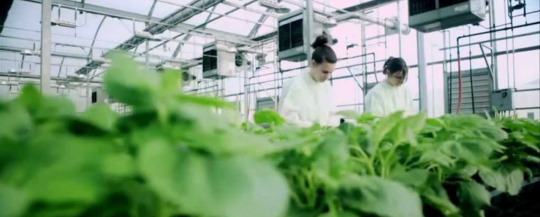
The Latin American market for agricultural biotechnology was valued at $10.1 billion and is expected to cross $21.9 billion by 2023, growing at a CAGR of 11.7% between 2017-2023. Brazil and Argentina are the major contributors in the agricultural biotechnology market in Latin American, characterized by the increasing production of transgenic products such as soybean and corn in these countries. Also, the rising adoption and production of transgenic crops is highly characterized by the growing support of government organizations in collaborating with private firms for the development of genetically modified crops.
Contact:P&S Market Research
347, 5th Ave. #1402New York City, NY - 10016
Toll-free: +18887787886 (USA/Canada)
Email: [email protected]
Web: https://www.psmarketresearch.com
Connect with us: LinkedIn | Twitter | Google + | Facebook
#Agricultural Biotechnology Market Share#Agricultural biotechnology Market Damand#agricultural biotechnology market
0 notes
Text
Emerging Economies to Offer Significant Growth Opportunities for the Orthobiologics Market
The global orthobiologics market is driven by increasing sports injuries and road accidents, increased obesity rate, growing awareness among people, and surging aging population. Moreover, the opportunities witnessed in the global market include development in implant technologies and shifting demand from mechanical to biological solutions. The global market has been classified in terms of product, application, end-user and geography. Based on product, the global market is segmented into bone morphogenetic proteins, demineralized bone matrix, synthetic bone substitute, allograft, viscosupplementation, machined bones, and stem cell therapy. Based on end user, the global market is segmented into orthopedic clinics, hospitals, and others.

The global orthobiologics market is witnessing surge, due to demand for novel products, increasing burden of chronic arthritis. Also, the growing requirement of minimally invasive procedures has led to increased demand for orthobiologic products. However, the strict regulatory approval procedure for orthobiologic products, high cost of procedures, and scarcity of reliable clinical trial data is expected to restrain the growth of the global market during the forecast period.
Download Sample of This Research Report: https://www.psmarketresearch.com/market-analysis/orthobiologics-market/report-sample
The geographical segmentation of the global orthobiologics market includes North America, Europe, Asia-Pacific and Rest of the World (RoW). North America and Europe accounted for major share in the global market, since the regions have the highest aging population, due to increase in life expectancy and prevalence of geriatric-based diseases, such as diabetes, arthritis, and obesity. The Asia-Pacific market is expected to witness surge, due to the enormous untapped patient population, increasing medical tourism, and economical treatment cost. The developing nations, such as India and China, in the Asia-Pacific market are expected to witness significant growth.
Make Enquiry Before Buying the Report: https://www.psmarketresearch.com/send-enquiry?enquiry-url=orthobiologics-market
The major companies operating in the global orthobiologics market include Exactech Inc., Medtronic plc., Stryker Corporation, Synthes Inc., Smith & Nephew Plc, Zimmer Biomet, DePuy Synthes Inc (Johnson & Johnson), Tornier Inc., and others.

Contact:
Mr. Kundan Kumar
Manager – Client Partner
347, 5th Ave. #1402
New York City, NY - 10016
Toll-free: +18887787886 (USA/Canada)
Email: [email protected]
Web: https://www.psmarketresearch.com
Connect with us: LinkedIn | Twitter | Google + | Facebook
#Orthobiologics Market#Orthobiologics Market size#Orthobiologics Market share#Orthobiologics Market Demand#Orthobiologics Market growth
0 notes